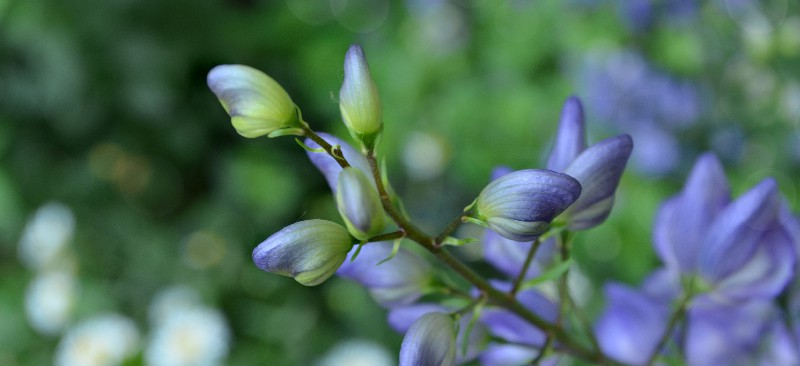This Dr. Axe content is medically reviewed or fact checked to ensure factually accurate information.
With strict editorial sourcing guidelines, we only link to academic research institutions, reputable media sites and, when research is available, medically peer-reviewed studies. Note that the numbers in parentheses (1, 2, etc.) are clickable links to these studies.
The information in our articles is NOT intended to replace a one-on-one relationship with a qualified health care professional and is not intended as medical advice.
This article is based on scientific evidence, written by experts and fact checked by our trained editorial staff. Note that the numbers in parentheses (1, 2, etc.) are clickable links to medically peer-reviewed studies.
Our team includes licensed nutritionists and dietitians, certified health education specialists, as well as certified strength and conditioning specialists, personal trainers and corrective exercise specialists. Our team aims to be not only thorough with its research, but also objective and unbiased.
The information in our articles is NOT intended to replace a one-on-one relationship with a qualified health care professional and is not intended as medical advice.
Aconite: Safe Homeopathic Remedy or Dangerous Poison?
February 14, 2020

Something that makes homeopathic medicine unusual is that certain plants can be utilized as both medicine and poison. One example is the plant called aconite, historically utilized to treat conditions such as colds and anxiety, but also to hunt and kill animals, and even prisoners, due to its highly toxic effects.
What Is Aconite?
Aconite is the name for a group of plants that are native to Europe and used in homeopathic medicine. It’s believed that there are more than 250 species of flowering aconite plants in existence, which belong to the plant family Ranunculaceae (also called the buttercup family).
These plants are also referred to by several other names, including monkshood, wolf’s bane, friar’s cap and auld wife’s huid. Aconite has earned some of these nicknames due to the shape of its flowers, which look similar to the hoods that monks wear.
The flowers are a deep, dark purple or blue color and are described as “helmet-shaped.” Other names for this plant originated because of its historical use in bait used to kill wolves.
Are aconite and Aconitum Napellus the same? For the most part, yes.
Aconite describes the larger genus, while Aconitum napellus is the species name for the plant most often used medicinally. Today these plants grow in many parts of the world, including the United States, Canada, Asia, Africa and Europe.
Although some herbalists and practitioners of folklore medicine have long used this plant for its potentially healing properties, it’s also known to be highly poisonous. Ingestion of aconite, or direct skin contact with the plant, can cause serious side effects and even be lethal, according to the National Poison Control Center.
Uses in Medicine
While research focused on its medicinal benefits has been somewhat limited, there’s a good deal of anecdotal evidence suggesting that this plant has certain therapeutic effects, when properly handled and processed.
Most of these effects are due to the presence of chemicals called alkaloids (especially aconitine), along with strychnine, nicotine, mesaconitine, hypaconitine and jesaconitine.
Although most of these benefits have not been proven, in the past medicinal aconite uses included:
- Fighting colds, infections and common viruses
- Protecting against development of heart disease
- Helping decrease inflammation and pain
- Reducing muscle spasms
- Managing asthma
- Protecting vision
- Defending against cognitive decline
Does this make aconite one of the best supplements for overall health? Not quite.
As explained more below, it can also cause serious, even life-threatening side effects when consumed in lethal amounts.
It’s critical that aconite be properly soaking, boiled and processed before being consumed in order to reduce its poisonous effects. It should also be used in small amounts and kept away from unprotected skin or open wounds.
Homeopathic Uses and Health Benefits
Aconite plants have been utilized in homeopathic, witchcraft and Traditional Chinese Medicine (TCM) for thousands of years, including to make healing tonics and also poison that was given to animals. It stopped being used medicinally in the United States in the 20th century.
According to the British Homeopathic Association, homeopathic uses for this plant include:
- Decreasing mental tension, anxiety and nervousness — some homeopaths even believe there are benefits of aconite for anxiety among children and teens, although this is unproven and controversial
- Fighting headaches and migraines
- Protecting against common colds, high fevers, chills and pneumonia
- Decreasing mild pain, including in children with toothaches (for example, tinctures may be applied to the skin to decrease joint pain)
- Reducing asthma symptoms, coughs, congestion and respiratory infections (a common preparation in TCM is mixing aconite with herbs including licorice root and ginger, which can also support the immune and respiratory systems)
- Decreasing high blood pressure
- Reducing vertigo symptoms
- Treating kidney stones
Products and Dosage
Aconite products come in several forms, including powder, tablets/capsules, extracts and topical tinctures.
Most often the root of the plant — which is considered the most toxic part — is carefully dried and prepared before being used to make supplements.
Dosage recommendations vary depending on why the product is being used, as well as your body size.
A general recommendation is to consume 60 milligrams of dried aconite root per dose. Because the concentration of aconite varies depending on the specific product, always read dosage directions carefully.
Risks, Side Effects and Interactions
What parts of the aconite plant are toxic? For example, can you touch aconite safely, as long as you avoid swallowing it?
A. napellus plants contain several highly toxic, poisonous compounds that can enter the body either through the mouth when swallowed or through the skin. Fresh aconite root (before being processed) poses the most risk for toxicity.
Low doses of only about two milligrams of pure aconite or one gram of the plant can be poisonous.
Poisoning can occur if you touch the plant’s leaves while not wearing gloves or another form of protection. Chemicals in the plant can be absorbed through the skin, which trigger tingling and numbness, followed by other symptoms as the poison spreads through the body.
Consuming or contacting aconite poison can cause symptoms including:
- Gastrointestinal issues, such as nausea, vomiting, diarrhea and burning sensations in the stomach
- Burning, tingling and numbness in the mouth and face
- Motor weakness, dizziness and confusion
- Tingling and numbness in the limbs
- Very high blood pressure and abnormal heartbeats/arrhythmias
- Difficulty breathing
- If toxicity is severe, organ failure and death
How fast does aconite kill? Within hours of consuming large amounts of aconite poison, serious reactions and even death are likely to occur.
Certain compounds in this plant negatively affect the cardiovascular system and respiratory system, which can be fatal. This is exactly why it was used in ancient times as a poison that could be spread onto spears and arrows and then used for hunting.
In severe cases of poisoning, aconite toxicity can lead to paralysis of the heart and respiratory system, causing suffocation and cardiac arrest.
The reason aconite consumption can be very dangerous is mostly because of the chemical aconitine, which is considered a potent neurotoxin and cardiotoxin when consumed in large amounts. It affects the way that sodium channels work and how cells communicate, causing changes in how the heart functions.
How to Treat Aconite Poisoning
It’s not always possible to reverse the effects of aconite poisoning, but symptoms can often be controlled using medication and other interventions. Today, doctors typically treat toxicity due to consumption of aconite poison in the following ways:
- Close monitoring of blood pressure, breathing rate and cardiac rhythm. If needed, the medication atropine can be used to treat abnormal heartbeats.
- Decontamination of the digestive system using chelation therapy, such as with activated charcoal, which binds to the poison so it can be expelled from the body. (This usually only works if consumed within one hour of ingestion.)
- Use of other medications to control side effects and pain, such as lidocaine, amiodarone, bretylium and others.
- Hemoperfusion (filtering the blood) if needed.
Conclusion
- Aconite (Aconitum napellus L.) is a plant that has both homeopathic/medicinal uses and poisonous effects, depending on how it’s used.
- Aconitum napellus is native to Europe but now grows throughout the world.
- While it’s no longer used as medicine in most industrialized countries, it continues to be used by homeopaths. Homeopathic uses for this plant include fighting colds and infections, asthma symptoms, pain and headaches.
- To reduce the risk for toxicity, the plant must be properly prepared (usually boiled and dried). Dosage varies depending on the product, so always read directions carefully.
- Aconite poisoning is a serious concern if large amounts are consumed or if direct skin contact is made with the plant. Signs of toxicity can include digestive upset, numbness and tingling, trouble breathing, heart palpitations and dizziness. Organ failure and death are also possible without emergency treatment.










